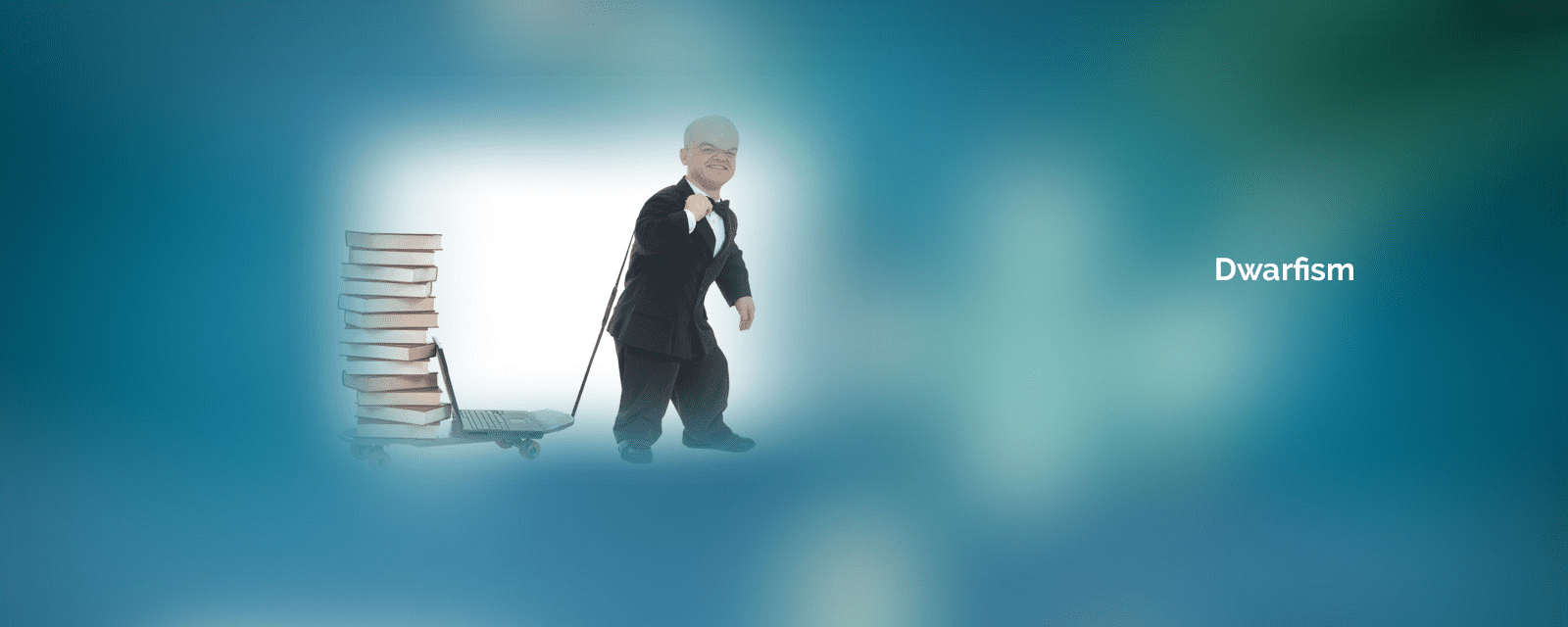Dwarfism, is a condition of short stature, and occurs in all organisms. In humans, dwarfism is defined as having adult height of less than 4 feet 10 inches, although these criteria differ. Some people are taller than five feet and are still dwarves. Dwarves have normal intelligence and life span. Dwarfism is of two types, proportionate and disproportionate, where the former is characterised by all the body parts being short, but in proportion, the latter is characterised by an average torso with short arms, or short torso with average arms. A type of dwarfism called Achondroplasia, is the reason of 70% cases of dwarfism. This occurs in 1 in 15,000 to 1 in 40,000 people, so is quite rare.
Most people suffer from disproportionate short stature, from Achondroplasia, which has the following symptoms or rather results:
- An average-size trunk
- Short arms and legs, with short upper arms and legs
- Short fingers, with a wide separation between middle and ring fingers
- Limited movement at elbows
- A disproportionately large head, with a prominent forehead and a flattened bridge of the nose
- Bowed legs (progressive)
- Swayed lower back (progressive)
- An adult height around 4 feet
Proportionate dwarfism, is something that results from medical conditions at birth, or appear during childhood. Growth hormone deficiency is quite common in proportionate dwarfism. Its symptoms and signs include:
- Height below one-third of standard growth chart
- Growth rate slower than expected for age
- Delayed or no sexual development during the teen years
Disproportionate dwarfism presents symptoms at birth or in early infancy. Proportionate dwarfism may not be immediately apparent. See your child’s doctor if you have any concerns about your child’s growth or overall development. Always trust premier institutions like Paras Hospital Groups, which have specialized and dedicated centres for such conditions.
Dwarfism can be the result of more than 200 conditions. Proportionate dwarfism is caused by metabolic and hormonal disorders such as growth hormone deficiency. Most disproportionate dwarfisms are the result of genetic mutation. What causes genetic mutation is unknown. The risk factors are few:
- Children who have a parent or parents with Dwarfism
- Children with parents that have a mutated FGFR3 gene
- Advanced paternal age causing mutations
Early diagnosis can help prevent or lessen some problems associated with dwarfism. People with growth hormone deficiency related dwarfism (proportionate) can be treated with growth hormones. Most treatments for dwarfism (disproportionate) cannot increase stature, but can help relieve problems related to dwarfism, like:
- Surgical treatments to correct the direction of bone growth, shape of spine, removing excess fluid around the brain.
- Physical therapy to strengthen muscles and increase movement
- Limb lengthening (controversial)



 Call us at
Call us at